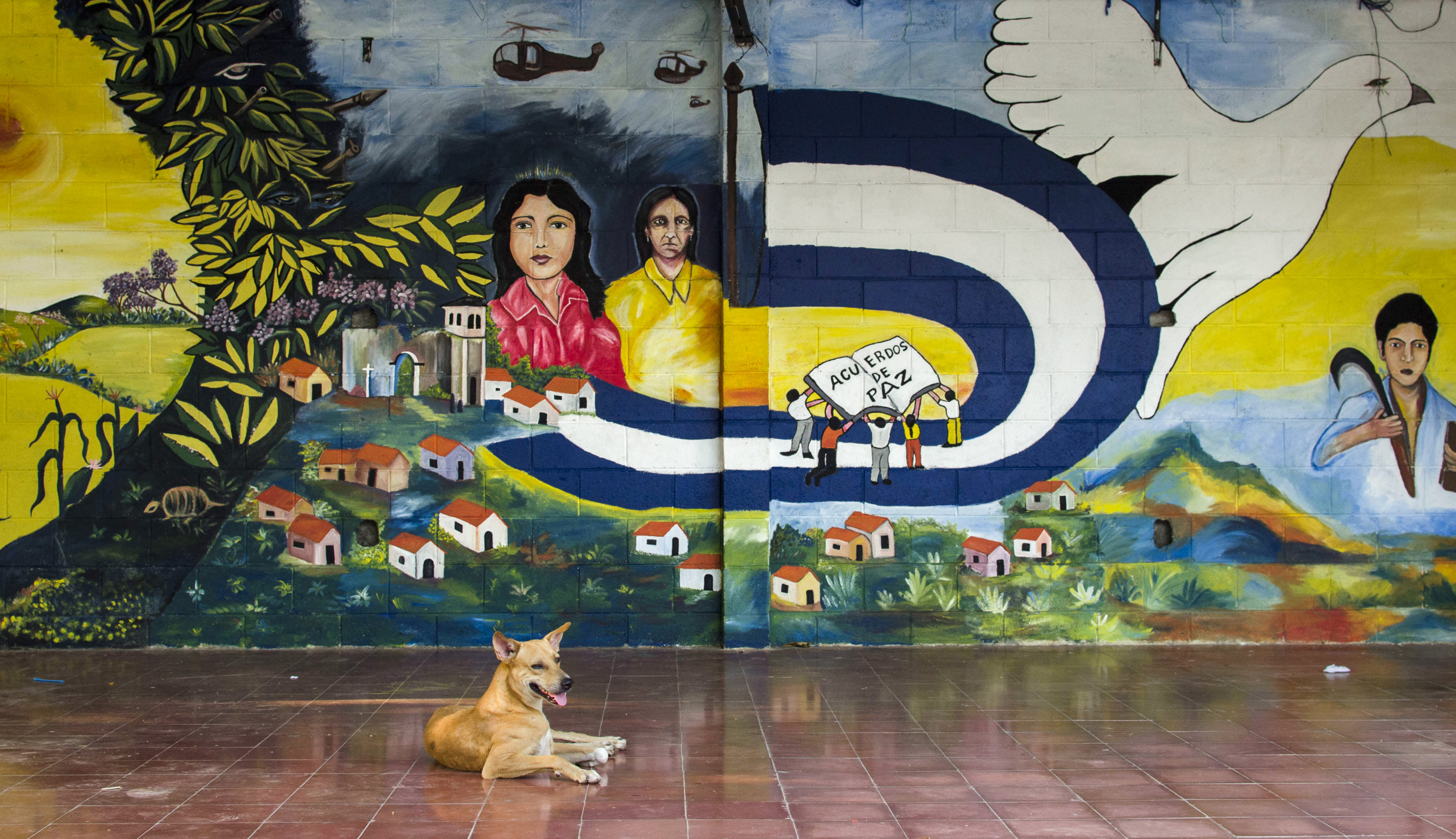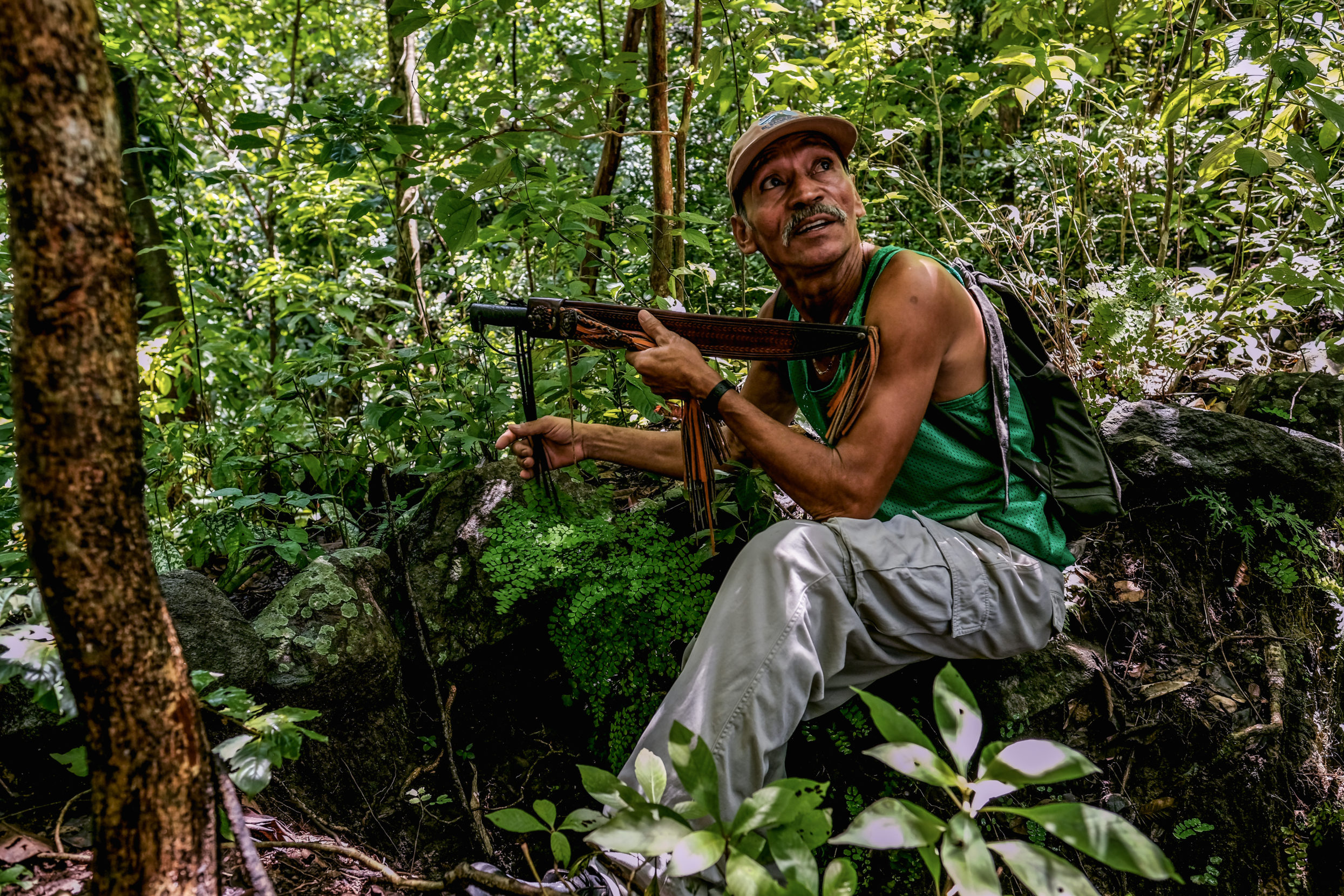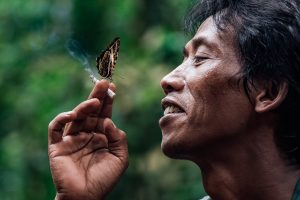Support Hidden Compass
Our articles are crafted by humans (not generative AI). Support Team Human with a contribution!
From above, nothing appeared amiss. The branches of the conacaste tree extended out like an umbrella, the limbs of the Texas madrone twisting and turning to fill the cracks. The cover was complete.
“We’ve got chickens!” A shout rose from below, from a lanky 19-year-old with brown hair and dark eyes named Rogelio.
His friends let up a small cheer and continued to mill around the open-air kitchen, laughing and chatting, an air of familiarity uniting the group of around 30 people.
One of the four cooks slid a feast of tortillas, eggs, beans, and chicken into the oven. The rustic stone contraption was built out of boulders and tucked under an overhang. They built a fire in a small hole attached to a tunnel and put the food in front of the opening. The tunnel, about 65 feet long and buried under an inch of earth, diverted the smoke away from the party undetected. Attracting unwelcome visitors would only mean trouble.
Above them, the wind rustled the trees. Every now and then, someone in the group would perk up, listening intently to a noise coming from the surrounding forest.
Before settling back into their meal, as they each listened and waited, the young men and women did a mental check of their few belongings: olive green bags, boots, rifles.
~~
The forest around them had pockets of abundance, but it wasn’t yet lush. It had been decimated by logging and farming in years prior. This was El Salvador in 1981, and the country was a year into a bloody civil war. With agriculture halted, the trees were growing back, quickly reclaiming their place in the ecosystem.
The forest was a refuge, an outpost of the armed resistance fighting for the common people. Rogelio and his friends near the stone oven were guerrillas. They only got chickens once or twice a year, and only by special order; the birds were considered a delicacy. One chicken would just feed four people, so some would have to settle — again — for the standard warm meal of eggs, tortillas, and beans.
But even those staples would soon become luxuries beyond their reach.
“The purpose was to scare the people… but it didn’t scare me. It was a spark.”
Starting in late 1981, the Salvadoran army introduced a new strategy: “tierra arrasada,” or “scorched earth.” In addition to committing war atrocities as they swept the land, the military began to bomb and burn land near the forest, destroying all the corn and bean crops. Nothing that could be used as food was spared, not even the cats and dogs in the street or the cockroaches under rocks. They intended to starve both the guerrillas and the locals in nearby Cinquera village who hadn’t yet fled the region.
Rogelio and the guerrillas came to a hard realization.
They could no longer use the ovens. Even though the smoke coming from them was channeled away from their location, any wisps rising above the tree line would bring an onslaught of shots from the military.
Instead, the guerrillas searched their surroundings for sustenance — roots, leaves, fruit, flowers, anything. Rogelio preferred oranges fresh from the tree, sugarcane juice, and tiny white blooms plucked from their stems. The trees, the undergrowth — the forest willingly gave the guerrillas what they needed to survive.
~~
Four decades later, I’m walking through that same forest, now known as Cinquera Forest Ecological Park. Teeming with flowers and vines, its spongey forest floor is still a haven for living things — a tiny fish only found here flits through the streams; a spotted skunk roots around for insects or rodents in the undergrowth; a freshwater snail otherwise only seen in northern Texas slowly tracks progress across a felled branch. Local populations of foxes and coyotes thrive here.

A dog lounges in the central plaza of Cinquera, El Salvador, where a mural depicts the village’s winding journey to peace after becoming a battleground during the Salvadoran Civil War in the 1980s. Photo: Zuma Wire/Alamy.
My guide, Rafael Hernández, bends down to point out a leafy plant. “This is a new fern species here,” he tells me with a toothy grin. His expression sparks with the excitement of someone enjoying something rare and special. “This is the only report of it in El Salvador. It’s originally from Costa Rica.”
I nod and we delve farther into the forest. A lanky 59-year-old in a khaki hat and cargo pants, Hernández blends into the verdant foliage. We skip across slippery river stones. A local dog follows us in companionable silence.
“There’s also a tree that was endemic to Nicaragua,” he continues, standing up a little straighter. “We feel very proud to now say it’s endemic of this forest. The only report of the tree species, the Ébano de Cinquera, in El Salvador is here.”
Every now and then, Hernández stops and looks around. He takes a deep breath, pulling in the mossy scent of the forest around us, and lets out a content sigh with a smile. His dark brown eyes shine with pride.
~~
Three years before he found himself cooking chicken in the forest, a 16-year-old Rogelio shuffled through San Salvador, the capital. It was September 1978, and he’d been working a construction job in town. He was headed back to Cinquera to see his family. His walk to the bus stop passed the most important brewery in town — and the workers were striking.
They gathered en masse outside the brewery to protest, shouting and pushing forward in an attempt to occupy its offices. Similar strikes around that time in San Salvador were militant, with the strikers going so far as to take hostages until their demands were met. The National Guard set up checkpoints to quash potential riots.
Rogelio skirted the edge of the protest. He had almost made it through one of the checkpoints when a guardsman, no more than 10 years older than him and clad in a dark green button-down shirt and pants with black leather boots, grabbed him.
“Are you red, young man? Do you belong to the troublemakers?” the guardsman demanded, the color a nickname for the leftist dissidents that would later form the Farabundo Martí National Liberation Front. He held Rogelio back as others opened and rifled through his backpack. “What’s in here? Are you carrying a gun? Are you taking the guerrillas’ propaganda?”
“No sir,” Rogelio replied. “I’m not involved. I’m just a worker going back home.”
The guardsman regarded him quietly, then handed back his backpack. “You’re free to go.”
But as soon as Rogelio turned to leave, another guardsman attacked him, slamming the heel of his hand up into Rogelio’s chest in a powerful blow to the ribs. Rogelio dropped his bag as he fell, gasping to regain his breath, his belongings scattering onto the street. After a moment’s recovery, he stayed hunched on the ground, watching the guards as he gathered his things in case they tried to hit him again.
“The purpose was to scare the people,” Rogelio would say later. “But it didn’t scare me. It was a spark.”
~~
The path Hernández and I are walking turns a corner, and we arrive at a crumbling stone structure next to three cavernous pits in the ground, each at least six feet deep and about 10 feet wide. Here, around 150 years ago, plantation owners forced laborers to make indigo, shifting a heady blend of water, chemicals, and plants from pool to pool. It took days to make one batch of indigo; later, workers who manned the chemical pool began to suffer from disease.
“These pits are where the flame of revolution actually began,” Hernández tells me as we peer into them. For an instant, he drifts away with his thoughts, absentmindedly petting the dog that still follows us.
The forest was a refuge, an outpost of the armed resistance fighting for the common people.
Indigo thrived in El Salvador’s volcanic soil, and 16th-century Spanish colonists began cultivating the coveted crop on the backs of the Indigenous population. This continued for three centuries; when El Salvador declared independence in 1821, the new nation’s landed elite took up the exploitation.
These wealthy descendants of the Spanish claimed Indigenous land as their own, aided by a government that called it “public” and sold parcels to the highest bidders. Those who weren’t forced to relocate into the mountains were paid a pittance to work manual labor on their own land, harvesting and producing indigo.
In the 1850s, members of these same wealthy families discovered the terrain in the mountains was ideal for coffee plants. Again, the Indigenous people were either forced to move, or forced to work on a plantation that was once their own land. The cultivation of this region contributed to massive deforestation in Cinquera.
Workers toiled long hours Monday through Saturday, to receive one Salvadoran colón per day. It wasn’t enough to provide even the basics for their families, Hernández says. They revolted twice: first in the early 1930s with an uprising that ended with their leader’s assassination and more than 10,000 other lives lost, and once in the 1970s with coordinated attempts at peaceful — but ultimately useless — discussion.
War was declared in 1980; by then, the guerrillas had already been operating for five years alongside labor unions and community organizations, pushing for higher pay and the restitution of their land. The men and women who decided to officially join the resistance against the military went to Cuba, where they underwent 11 months of training to become high-level military officials. When they returned, some were sent to live among the trees in Cinquera, using the forest as their base of operations.
~~
At 19 in 1981, Rogelio was one of the highest ranking guerrillas. He had been the youngest to join the forces, a month after that day on the street with the guards.
Skirmishes with the army came nearly every day in Cinquera. When bullets began to fly, he jumped into a deep, L-shaped combat trench, peering out through the undergrowth now at eye level. The trenches held two people each. Rogelio took the spot all the way to the left in the front. Another guerrilla moved into the very back of the L. This way, when Rogelio fired at the military, the shells fell down into the trench to his right, but didn’t burn the second shooter.
A few years into the war, the military had taken their fight off the ground and into the sky. Planes flew over the forest four to six times a day, pilots peering through the trees as they looked for movement, set on destroying anyone living there. The trenches hid the guerrillas from ground attacks, but the forest was no match for shots from the sky.
They needed a new way to fight. So, for two months, Rogelio and his group learned how to attack airborne forces. It was a short but intense training — how to measure the altitude helicopters and planes flew, their speed, the windspeed. As the final test of their new skills, they headed about 10 miles away to Suchitoto, where they started a riot to entice air raids.
That day, Rogelio and his crew successfully brought down two helicopters. For his efforts, Rogelio earned the highest certification in the squad: a 10+. They returned to the forest, under direction to bring down anything flying. In subsequent attacks, six Air Force pilots came crashing down.
~~
It was 1987, and an air raid was coming. Tree branches and leaves whipped around above the guerrillas. A steady chuff-chuff-chuff grew louder as an enemy helicopter approached the forest. Suddenly, a loud scream ripped through the air, quickly followed by a massive explosion.
“Rockets!” someone shouted.
The guerrillas sprang into action, heading for cover among the trees. But Rogelio was out too far. A rocket smashed into a tree two feet from where he was standing, launching shrapnel in every direction. He fell to the dirt, a searing pain tearing across his leg. He’d been hit.
~~
In November 1989, the guerrillas launched their final attack, centered on the capital of San Salvador, in an offensive called “hasta el tope” — “to the top.” The goal was to take down the military with two weeks of intense fighting, 24 hours a day. But, as the violent offensive dragged on for a month, the guerrillas failed — and so did the military’s counterattack. The war had reached a stalemate. Soon after, the United Nations stepped in to negotiate a peace treaty, a process that took 20 months of tense negotiations.
Signing that peace treaty was one of the most difficult moments of the entire war for the guerillas. They had to turn in their weapons. They had to give officials their real names. They wondered if, with this information, the military would attack their families. But the United Nations, combined with the governments of other countries and the Roman Catholic church, prevented the army from doing so, and peace held.
~~
He fell to the dirt, a searing pain tearing across his leg.
Hernández rests his foot on a rock and pulls up his pant leg, dragging a finger up a long, jagged scar on his shin. Through a serene smile, he speaks of 1987, when a rocket hit a tree, and he was injured by the shrapnel. Back then, everyone called him Rogelio.

Guide Rafael Hernández recounts how Cinquera Forest Ecological Park was a refuge for guerrilla fighters during the Salvadoran Civil War. Photo: Stacey Leasca.
The forest he leads me through carries scars of its own — hidden graves, abandoned kitchens, and remnants of two cycles of deforestation and regrowth. The past was tough for both Hernández and the forest. But, together, they survived.
Later on in our hike, Hernández stands next to a hillside tree. He takes a step and suddenly lurches, spraying dirt from the path up around his foot — a reenactment of how, in 1990, he was thrown about 15 feet away after he tripped the cord of a landmine in this exact spot. He was injured badly enough to be evacuated.
It was difficult for Hernández to leave the forest, his home for 10 years. The guerrillas looked out for one another, he explains. They were like family. And it was even more difficult because he was evacuated to a local community without his rifle. He worried that someone would tell the army soldiers he was there. When they did come through, he carried a baby so he wouldn’t look suspicious. Hernández hid in local communities like that for a year, until the war ended.
After the signing of the peace treaty in 1992, the rest of the guerrillas left the forest, too. Having spent their entire adult lives under the shade of the trees, many of them were unsure how to live under the open sky.
~~
Four years later, in 1996, loggers were pouring into Cinquera forest, and many of its trees were quickly reduced to stumps. The life of the forest moved in opposition to the war — only during the war did the logging stop, making way for natural regrowth across the hills. Peacetime in the community signaled wartime in the woods, with loggers grabbing what they could.
El Salvador is one of the most heavily deforested countries in the world: It has lost nearly 85% of its tree cover since the 1960s. Losing trees at a faster rate than the rest of the country, Cinquera ranks among the highest rates of deforestation in all of the rapidly vanishing forests of Latin America.
During those post-war years, Hernández spent as much time in the forest as possible. He was much more comfortable among the trees, and took every chance to get back into the woods. As the loggers came, he watched his former home being carted away, log by log.
In 2000, after four years of increasing alarm at how quickly the trees were disappearing, Hernández decided to fight back — but this time, without his rifle.
In Cinquera village, he helped spearhead a conservation effort. He joined with friends he’d made when he worked at social organizations after the war, and together they founded La Asociación de Reconstrucción y Desarrollo Municipal, a group focusing on community and environmental development and conservation. They first worked to turn the unlogged portion of the forest into a preserve and then spread out from there — claiming land for the preserve both in new parts of the forest and from areas that were previously logged. Hernández took on a new role as the head ranger in Cinquera Forest Ecological Park.
In a way, he says, he’s giving his life to the protection of the forest. It saved the lives of so many — and now he’s determined to return the favor.
“Even if a snake is venomous, I know it’s playing an important role in the forest,” he explains. “I am confident that any kind of living thing has the right to live and reproduce.”
~~
Today, Hernández tells his story during conservation walks through the forest. My first thought when I saw his relaxed grin was one of disbelief: There’s no way he killed people. But he did — a lot of them. During the few hours we spent together along the well-maintained trails of Cinquera, he never spoke of the people he killed, aside from affirming that there were many, and he did what he had to do.
War, and people, are complicated. The forest is not.
The remains of an army helicopter sit in the central square of Cinquera village, the tail pocked with bullet holes from when guerrillas shot it down with rifle fire in 1991. It’s not a celebration of victory, though, Hernández tells me. It’s there as a cautionary tale for new generations, to demonstrate the importance of learning to fix injustices without violence. In 2017, Cinquera citizens voted with an overwhelming 98% majority to prohibit metal mining in the region, helping pave the way for a nationwide ban. El Salvador was the first country in the world to impose such a law.
After four years of increasing alarm at how quickly the trees were disappearing, Hernández decided to fight back — but this time, without his rifle.
Like that rusted-out helicopter, Hernández believes the example of his conservation work is necessary not just for the survival of his long-ago hideout, but for today’s youth. Young visitors to the forest often tell him they want to have his experience; they want to be an ex-guerilla.
“You’re fortunate,” he tells them. “Don’t ever ask for a life scarred by war.”
Hernández isn’t the same person he was before the war began. And he’s not the hotshot guerrilla he once was. Cinquera isn’t the same forest it was before or during the war, either. Both man and nature have been reborn as something new, having grown into that existence with the help of each other.
Still, the scars and the stories remain.
Jennifer Billock
Jennifer Billock is an award-winning writer, best-selling author, and writing coach. She is currently dreaming of an around-the-world trip with her Boston terrier.



